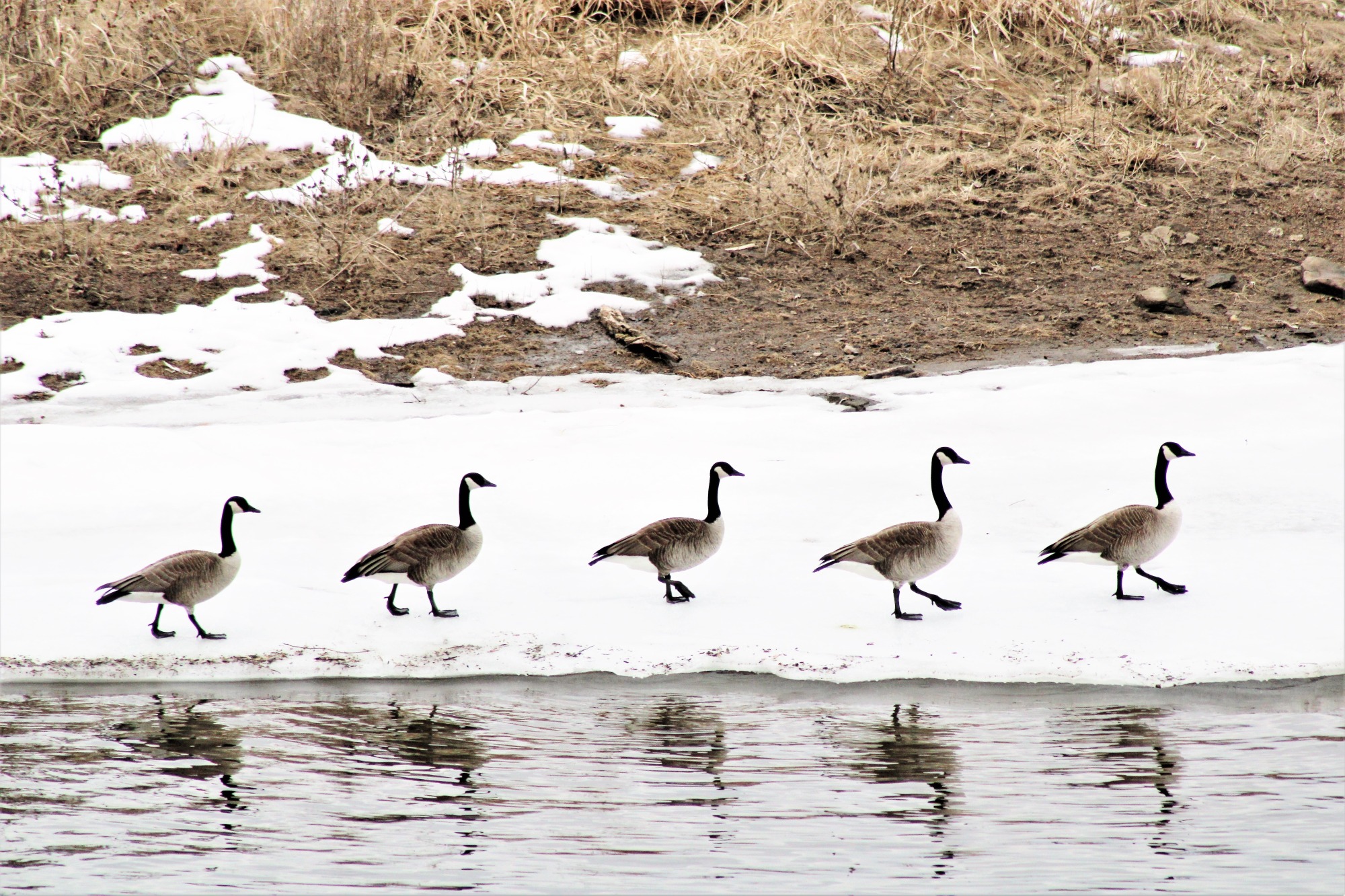February Nature Notes

February Frolicking
Well, the weather now is quite rewarding after the “blast” we received a few weeks ago. Thousands of birds were utilizing what open water there was below the dam. The melting snow has, at least, added some moisture to our watersheds.
It may seem too early for all of these “nature happenings” but, yet it really isn’t. Some of the opportunities that nature gives way to points us in the direction that spring is soon to come. With the number of eagles being observed, it appears that we have a huge population living in Marion County. Migration brings numerous eagles to all of Iowa reservoirs and river corridors in late October and November. Late January, February, and early March is the beginning of their northern return, depending how far south they travelled. They may spend some time here to feed and conserve energy, but these early migrators are heading back north to get to their nesting territories. Eagles are often seen sitting on the ice near cracks/crevices in the ice, and openings to feast upon the fish that have been winter killed.
This month, our resident eagles will be attempting to lay eggs in their humble abodes that they have been working on preparing a safe, soft, and spacious place for their young to grow. The Iowa DNR collects data on many of our resident wildlife and bird species. I haven’t received an updated report for the winter eagle count this year, but this is the data from last year.
*The data noted from the IDNR for Marion County Eagles are: 34 total nests, 23 of those nests are with a status of active, 6 inactive, 5 with unknown status. Of course, these are nests that have been reported or that they are aware of.
February’s full moon will be the Snow Moon occurring on February 24, 2024. February is known as the month with the heaviest snowfall in the Northern Hemisphere. Some refer this moon as the Wolf Moon, Hunger Moon, and Storm Moon.
Groundhog Day is today, February 2. Punxsutawney Phil did NOT see his shadow and declares and early spring. (Unfortunately, he is only right about 39 percent of the time). We will give him all the credit for now.
Morning songs from winter’s backyard birds may begin vocalizing their spring courtship songs, especially the cardinals, blue-jays, and chickadees. If you have been out and about near the woodland edges and trails, you may have already heard the vocals of the American robins. There are many who stay all winter long.
With the longer days, many of Iowa’s breeding birds have started their journey north to reach Iowa and beyond in March, April, and May. Canada geese, mallards, goldeneyes, and American white pelicans will still be active around open areas of water and below the Red Rock dam. Can’t wait for next month when March Madness and migration begins to appear here! Depending on how the weather stays, migrating snow geese and other birds heading for the tundra will be moving.
The coyote, red fox, gray fox, beaver, muskrat, and raccoon mating season begins in February. The Virginia opossum may have their first litter in late February. Remember, the opossum is our only marsupial (pouched mammal). Now is a great time to see many different tracks while these animals become more active.
Antlers have already been shed by some White-tailed deer, but many of them are still being seen with one or both. Shedding those antlers increases mobility to deer. Other animals locate sheds during their foraging, and they provide much needed nutrients such as bone, calcium, phosphorus, and protein.
A few Long-eared owls have been appearing in the area! Keep your eyes on the pines and firs for them. Long-eared owls are listed as a threatened species in Iowa. You never know what feathered and fur visitors may start to show up. It won’t be long before they begin their northern journey.
Happy Earth Walking…


